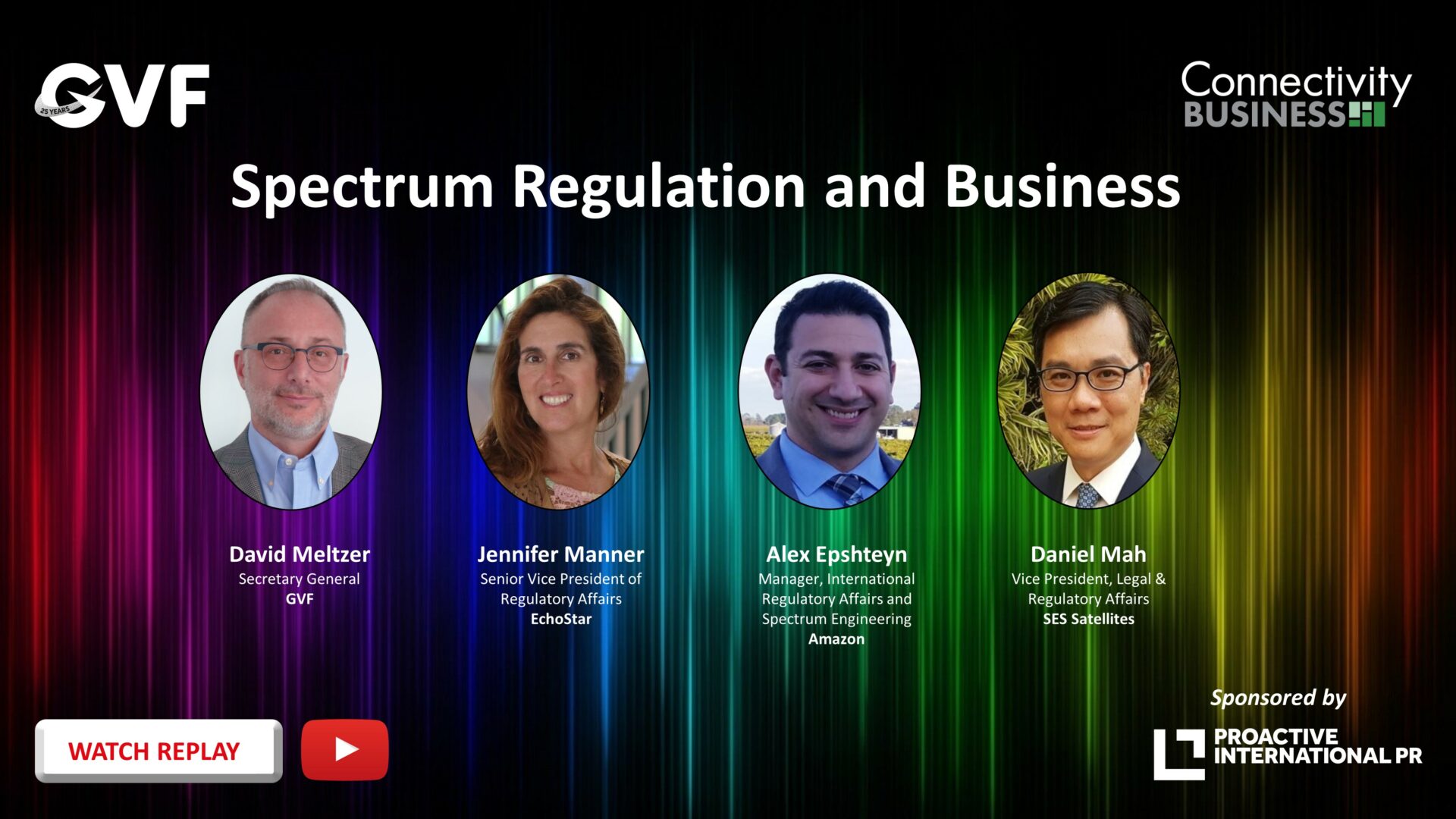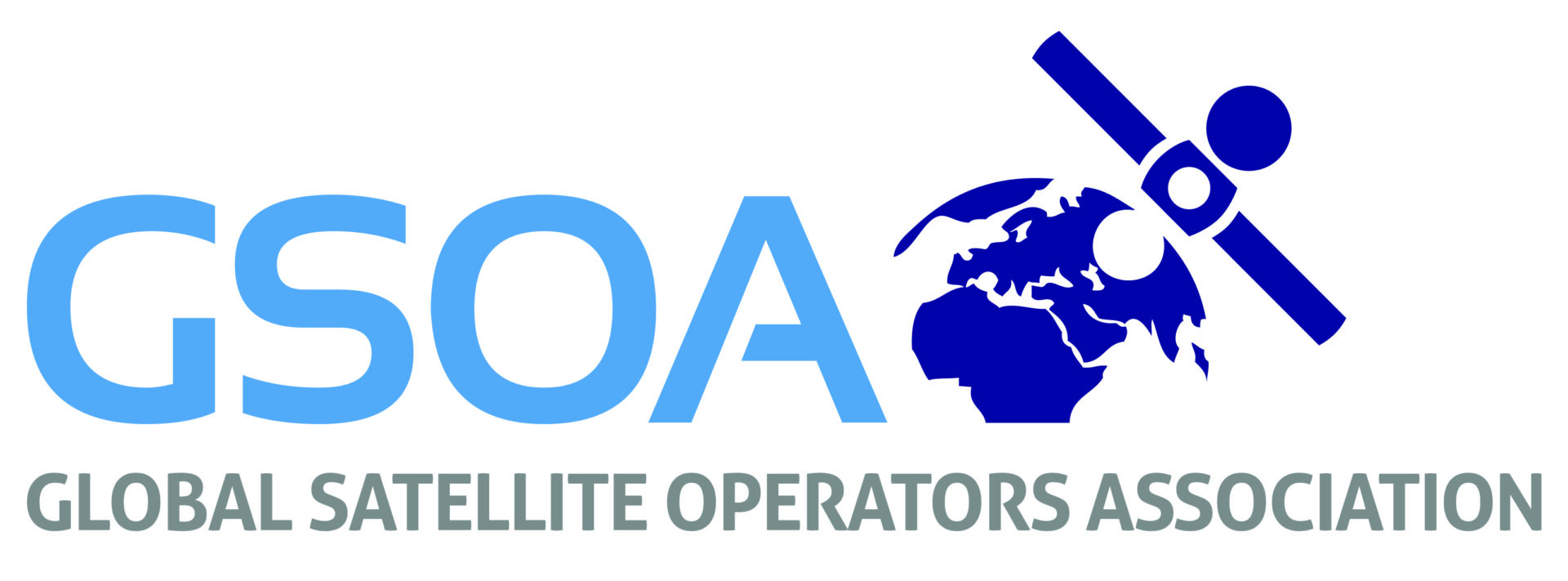Spectrum Regulation and Business

With an expert line-up comprising Jennifer Manner of EchoStar, Alex Epshteyn of Amazon, Mohaned Juwad of INTELSAT, and Daniel Mah of SES, this webinar was bound to attract considerable interest in the subject matter of how decisions made on global satellite spectrum matters impact satellite businesses everywhere.
An audience from 52 countries benefitted from a penetrating dialogue which began by looking at the decisions coming out of WRC-15 and WRC-19 which had a significant impact on the panellists’ companies or the entire industry’s bottom line, and went on to cover how spectrum experts in satellite companies work with colleagues on the business side to develop strategies to secure new spectrum or preserve existing spectrum rights. The discussion explored the nature of the best business arguments to secure existing spectrum rights or acquire new spectrum rights, contrasting between the evidence of large investments, or meeting public policy objectives such as reducing the digital divide, or customers depending on a new or future services.
A highly engaged global audience posed numerous questions, stimulating some very thought provoking answers from the panel and the webinar continued beyond its scheduled hour by a full 15 minutes at which time some questions still remained. You will find the written answers to these remaining questions on this page along with the opportunity to watch the recording of a great event.
Q & A continued….
The following question was posed through the chat function during the panel but we ran out of time to respond in the live programme. Thank you to our audience for taking an active part by asking questions, and to our panellists for their time to answer them after the webinar ended…
1. Is there any movement in the regional runups to WRC-23 to address the issue of aggregate frequency interference as the number of constellations increases??
Alex Epshteyn (Amazon): Yes, there are active initiatives under way as part of the WRC-23 study cycle to study the issue of aggregate interference from non-GSO systems and procedures to evaluate both aggregate interference and interference between two non-GSO systems.
2. Recently there was a filing out of Rwanda for >100K NGSO satellites. How do the panelists feel about such a request? Do you all think that this a case for a nation who wishes to hide their intentions (i.e. China) to just use a 3rd world country. When the requests, to the layman, seem so outrageous, how does your esoteric spectrum world deal with these cases?
Jennifer Manner (EchoStar): Although the filing is for an extremely large constellation, the stringent milestone requirements adopted at WRC-19 will serve to prevent purely speculative filings serving to warehouse spectrum on a long-term basis. It should also be noted that the filing by Rwanda was not on behalf of a Chinese operator.
3. Don’t you think time has come to plan for all optical satellite network and efficiently use that part of the spectrum that can’t be used for terrestrial networks for inter satellite links, etc?
Jennifer Manner (EchoStar): Inter Satellite Links (ISL) are an efficient use of spectrum that is increasingly being utilized by satellite networks. Optical links are not regulated by the ITU.
4. For Amazon – has the seven-year clock for Kuiper started?
Alex Epshteyn (Amazon): At the ITU, the start of any satellite filing starts a 7 year regulatory period and we must bring into use our filing in this seven year period. This initial 7 year regulatory period clock has started for Amazon’s ITU filings. Additionally, at WRC-19, a milestone period of an additional 7 years was developed. The milestone timeline does not start until the end of the first 7 year regulatory period and this seven year milestone clock has not started for Kuiper.
5. I will point out that Indonesia which has over 10k VSAT in C band is about to do share the band between mobile and satellites. I acknowledge the alternative.
Mohaned Juwad (Intelsat):Indonesia being one of the largest mobile market in the world isn’t just looking at C band but also 2.3 GHz range for 5G. So we believe a balanced approach to have access to bands other than just C band is a very likely alternative. The Mobile connectivity challenges in Indonesia are not caused by spectrum shortage – it is infrastructure, affordability, and coverage. And in Indonesia Satellite continues to provide critical services that cannot be provided by other means and it would be welfare destruction to accommodate IMT in these bands when 3.4-3.6 GHz, 2.3 GHz and sub 1 GHz bands remains largely unused – I would like to add there are alternatives such as:
• Re-farming 2G and 3G spectrum: Dynamic spectrum sharing (DSS) allows mobile operators to use the same spectrum band for different radio access technologies such as 4G and 5G.
• Sharing spectrum among MNOs: Sharing infrastructure and spectrum leads to higher efficiency and lower opex. Sixteen mobile operators in 10 countries have launched 5G using DSS.
6. With respect to NGSO mega-constellation that use the same frequency Does sharing the spectrum between themselves is viable in same area?
Alex Epshteyn (Amazon): NGSO systems will be able to operate with small beam footprints and efficiently re-use spectrum within the cells in which we will serve customers. With respect to sharing of spectrum between different NGSO systems, this is typically discussed in coordination proceedings with other operators. Additionally, the ITU is in the process of developing standards of permissible interference that can be used to aide coordination and sharing of spectrum between NGSO constellations.
7. How do you deal with the high absorption loss in higher frequencies which may force the operators to transmit with much higher power and which may affect satellite networks with smaller separation angle?
Alex Epshteyn (Amazon): The same technologies that will help satellite systems account for rain (Adaptive coding and modulation, site diversity, coding states, etc.) will be used to help satellite systems account for any loss that may be encountered in the link. The satellite networks will be able to adapt to any atmospheric disruption detected and adjust their operations to continue providing services.
